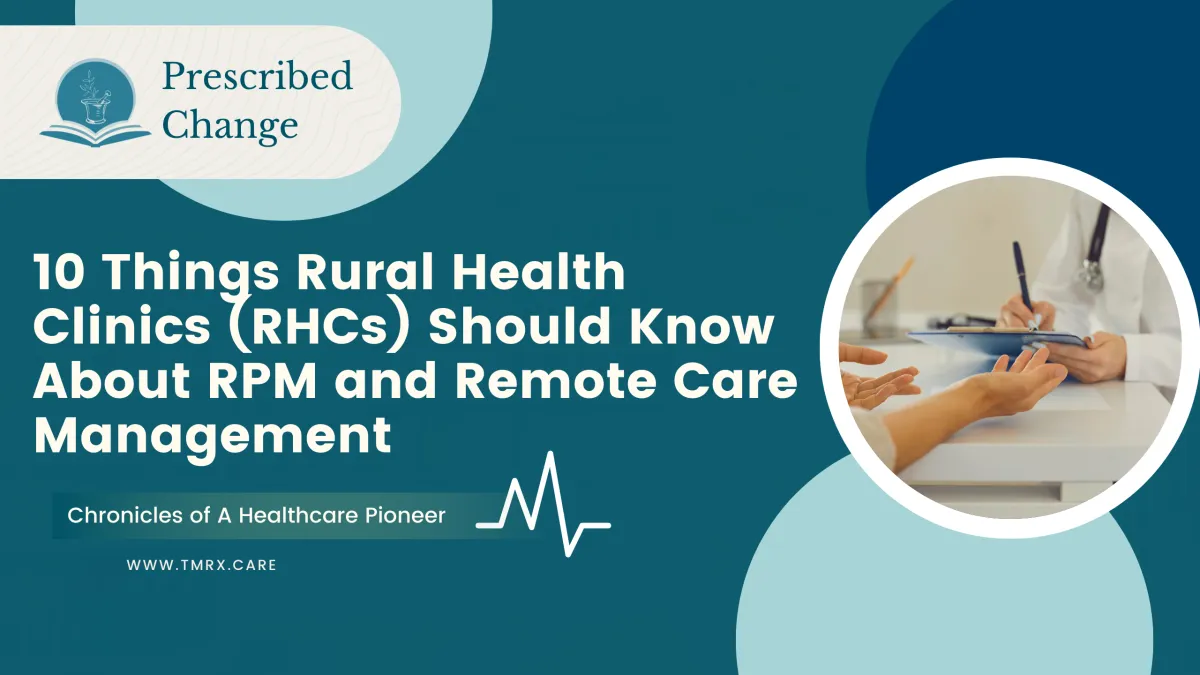
Discover articles related to Remote Pharmacy Here
Uncover weekly topics on Pharmacy, Remote Patient Services, and more!

10 Things Rural Health Clinics (RHCs) Should Know About RPM and Remote Care Management
Understanding RHCs and the Role of Remote Care
Rural Health Clinics (RHCs) play a vital role in providing healthcare services to underserved communities across the U.S. With limited resources and staffing, RHCs often face challenges in managing chronic conditions and ensuring continuity of care for patients in remote areas.
Remote Patient Monitoring (RPM) and Remote Care Management (RCM) present innovative solutions that help RHCs expand their reach, improve patient outcomes, and optimize operations.
Here are 10 key things RHCs should know about RPM and remote care management:
1. RPM and RCM Improve Patient Outcomes
By continuously tracking patients’ health metrics (e.g., blood pressure, glucose levels, oxygen saturation), RPM enables early detection of potential health issues before they become severe. This proactive approach helps reduce hospitalizations and emergency visits.
2. Medicare Covers RPM Services
Medicare and many private insurers reimburse for RPM services, making it a financially viable option for RHCs. RHCs can provide RPM services and get reimbursed under Chronic Care Management (CCM) and Principal Care Management (PCM) codes.
3. RCM Helps Manage Chronic Conditions
Remote Care Management goes beyond just data collection—it provides care coordination, medication adherence, and personalized coaching to help patients manage chronic conditions like diabetes, hypertension, and COPD effectively.
4. RPM Reduces Provider Burden
With staffing shortages in rural healthcare, RPM and RCM allow providers to monitor multiple patients efficiently without requiring in-person visits. This enhances workflow efficiency and reduces administrative burdens.
5. It Enhances Patient Engagement and Compliance
When patients regularly monitor their health metrics and receive timely interventions, they are more likely to stay engaged in their care plan, leading to better health outcomes.
6. RPM Devices Are Easy to Use
Modern RPM devices, such as blood pressure cuffs, glucose monitors, and pulse oximeters, are designed to be user-friendly and often require minimal patient effort. Many devices sync automatically with provider systems.
7. RCM Meets the Needs of an Aging Population
With an increasing elderly population in rural areas, remote care solutions allow RHCs to provide consistent care for seniors, helping them stay independent while managing chronic illnesses.
8. RPM Supports Preventative Care
Rather than only treating illnesses as they arise, RPM enables preventative interventions by identifying health risks early, leading to lower healthcare costs and better patient experiences.
9. Reimbursement for RPM Expands Revenue Streams
RHCs can generate additional revenue through RPM reimbursement. By leveraging Medicare programs, clinics can offset operational costs while improving patient care.
10. The Pivot Program Helps RHCs Implement RPM Successfully
Starting an RPM or RCM program may seem overwhelming, but The Pivot Program provides pharmacists and healthcare professionals with the training and tools to implement these services effectively.
Final Thoughts
RHCs are at the forefront of providing essential healthcare services to rural communities. With RPM and RCM, they can enhance patient care, optimize workflows, and create new revenue opportunities. If your clinic is considering implementing remote care services, now is the time to act.